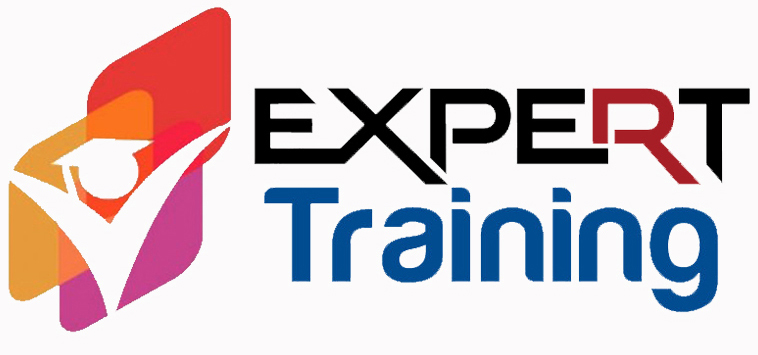Description
Price: 8.00 USD | Size: 1.01 GB | Duration : 5.22 Hours | 101 Video Lessons | Bonus : SELinux PDF Guides
BRAND: Expert TRAINING | ENGLISH | INSTANT DOWNLOAD | ⭐️⭐️⭐️⭐️⭐️ 4.9
Mastering Security-Enhanced Linux (SELinux)
Mastering Security-Enhanced Linux (SELinux) is your full training to understand and use SELinux. SELinux is a valuable addition to the standard Linux security options that makes your Linux distribution secure. The course starts with the basics of SELinux and goes deeper into more advanced topics like SELinux and Multi-Level Security or (MLS) and Multi-Category Security (MCS) and managing SELinux with Ansible. It also has in-depth coverage about SELinux in containerized environments. It has labs throughout so you can see SELinux in real time and practice as you learn.
Main features of the course are:
- Understand when SELinux and how it is needed
- Learn how to troubleshoot problems occurring because of SELinux
- Make your application work with SELinux
- Implement military grade security using SELinux MLS and MCS
This course is also a full resource for learners who want to thoroughly understand SELinux while preparing for any Red Hat Enterprise Linux related exam, as well as application developers and administrators who want to over the highest possible level of security by using SELinux.
Topics included in this course:
- SELinux Fundamentals covers basic concepts like mandatory access control, how to enable SELinux, understanding context labels, managing context labels and how to use Booleans.
- Analyzing SELinux teaches how to analyze SELinux by covering troubleshooting and showing how to analyze Booleans and rules.
- Using Custom Applications with SELinux shows custom applications with SELinux and covers working with SELinux modules, and how to make any application work with SELinux.
- Military Grade Security with SELinux users and MLS offers three lessons about the best kind of protection and security that SELinux has to offer. It covers how SELinux can be used in military organization and covers topics of SELinux users, how to manage multi-level security and how to use multi-category security.
- Configuring SELinux for containers explains how to make a containerized environment absolutely secure by adding SELinux.
- Managing SELinux with Ansible covers how to secure containers with SELinux, and how to manage SELinux with Ansible.
Skill Level:
- Beginner
Learn How To:
- Understand SELinux
- Monitor SELinux behavior
- Manage SELinux Context Labels
- Manage SELinux Booleans
- Troubleshoot SELinux
- Create SELinux Policy Modules
- Secure Containers with SELinux
- Make Any Application work with SELinux
Course requirement:
- Install and configure a lab environment. This can be a Linux virtual machine that runs in virtualization software on the participants own computer, using software like VMware Workstation or Oracle VirtualBox, or on a dedicated computer.
- Install a virtual or physical machine with a recent version of either Red Hat Enterprise Linux, CentOS Stream, Rocky Linux or Fedora.
Who Should Take This Course:
- DevOps Engineers
- DevSecOps Engineers
- Software Developers
- IT Administrators
- IT Architects
- Hybrid Cloud Administrators
- Students preparing for any Red Hat exam
Table of contents
Introduction
Mastering Security-Enhanced Linux (SELinux): Introduction
Module 1: SELinux Fundamentals
Module introduction
Lesson 1: Mandatory Access Control
Learning objectives
1.1 Working of SELinux
1.2 Requiring Mandatory Access Control
1.3 Understanding SELinux and Discretionary Access Control
Lesson 1 Lab Exploring SELinux Settings
Lesson 1 Lab Solution Exploring SELinux Settings
Lesson 2: Enabling SELinux
Learning objectives
2.1 Managing States and Modes on Red Hat
2.2 Installing SELinux on Ubuntu
2.3 Understanding Policies
Lesson 2 Lab Managing SELinux States
Lesson 2 Lab Solution Managing SELinux States
Lesson 3: Understanding Context Labels
Learning objectives
3.1 Showing Context Labels
3.2 Understanding When to Set Context labels
3.3 Using the audit.log to Examine Issues
3.4 Understanding Context Inheritance
Lesson 3 Lab Examining SELinux events
Lesson 3 Lab Solution Examining SELinux events
Lesson 4: Managing Context Labels
Learning objectives
4.1 Finding the Right Context
4.2 Setting Context on Files
4.3 Setting Context on Ports
4.4 Using Customizable Types
4.5 Configuring a Non-default Apache DocumentRoot
Lesson 4 Lab Running SSH on Port 443
Lesson 4 Lab Solution Running SSH on Port 443
Lesson 5: Using Booleans
Learning objectives
5.1 Understanding Booleans
5.2 Using Booleans
5.3 Finding Booleans
Lesson 5 Lab Configuring vsftpd for Anonymous Uploads
Lesson 5 Lab Solution Configuring vsftpd for Anonymous Uploads
Module 2: Analyzing SELinux
Module introduction
Lesson 6: Troubleshooting SELinux
Learning objectives
6.1 Troubleshooting SELinux Issues
6.2 Understanding the Audit Logs
6.3 Understanding Dontaudit Rules
6.4 Using audit2allow
6.5 Using sealert
6.6 Loading SELinux Manually
Lesson 6 Lab Troubleshooting SELinux
Lesson 6 Lab Solution Troubleshooting SELinux
Lesson 7: Analysing Booleans and Rules
Learning objectives
7.1 Analyzing the Policy
7.2 Terminology
7.3 Using sesearch
7.4 Using seinfo
7.5 Finding What a Domain can Do
7.6 Analyzing Booleans
7.7 Analyzing Transition Rules
Lesson 7 Lab Investigating Booleans
Lesson 7 Lab Solution Investigating Booleans
Module 3: Using Custom Applications with SELinux
Module introduction
Lesson 8: SELinux Modules
Learning objectives
8.1 Managing Modules
8.2 Writing Custom Modules
8.3 Generating Custom Modules
Lesson 8 Lab Enabling your Application with Modules
Lesson 8 Lab Solution Enabling your Application with Modules
Lesson 9: Making Any Application work with SELinux
Learning objectives
9.1 Understanding Options for Running Custom Applications
9.2 Using Unconfined Domains
9.3 Using run-on to Run Applications with a Specific Context
9.4 Using sepolgen to generate Application Policy Modules
Lesson 9 Lab Running any Application on an SELinux System
Lesson 9 Lab Solution Running any Application on an SELinux System
Module 4: Military Grade Security with SELinux users and MLS
Module introduction
Lesson 10: SELinux Users
Learning objectives
10.1 Understanding Users and Roles
10.2 Mapping Linux Users to SELinux Users
10.3 Using Booleans to Manage SELinux Users
10.4 Restricting Root
Lesson 10 Lab Creating a Kiosk User
Lesson 10 Lab Solution Creating a Kiosk User
Lesson 11: Using Multi-Level Security (MLS)
Learning objectives
11.1 Understanding MLS and MCS
11.2 Enabling an MLS Policy
11.3 Creating a user with a Clearance Level
11.4 Understanding What Needs to be done on Directories
Lesson 11 Lab Using MLS
Lesson 11 Lab Solution Using MLS
Lesson 12: Using Multi-Category Security (MCS)
Learning objectives
12.1 Understanding MCS
12.2 Grouping Users and Applications with MCS
12.3 Combining MLS and MCS
Lesson 12 Lab Configuring MCS
Lesson 12 Lab Solution Configuring MCS
Module 5: SELinux, Containers, and Ansible
Module introduction
Lesson 13: SELinux and Containers
Learning objectives
13.1 Understanding Container SELinux Needs
13.2 Configuring Container Storage Access
13.3 Using udica to Configure Container Access
Lesson 13 Lab Configuring SELinux for Containers
Lesson 13 Lab Solution Configuring SELinux for Containers
Lesson 14: Using Ansible to Manage SELinux
Learning objectives
14.1 Using SELinux Ansible modules
14.2 Using the RHEL System Role to Manage SELinux
Lesson 14 Lab Using Ansible to manage SELinux
Lesson 14 Lab Solution Using Ansible to manage SELinux
Summary
Mastering Security-Enhanced Linux (SELinux): Summary
Bonus : SELinux PDF Guides











Reviews
There are no reviews yet.